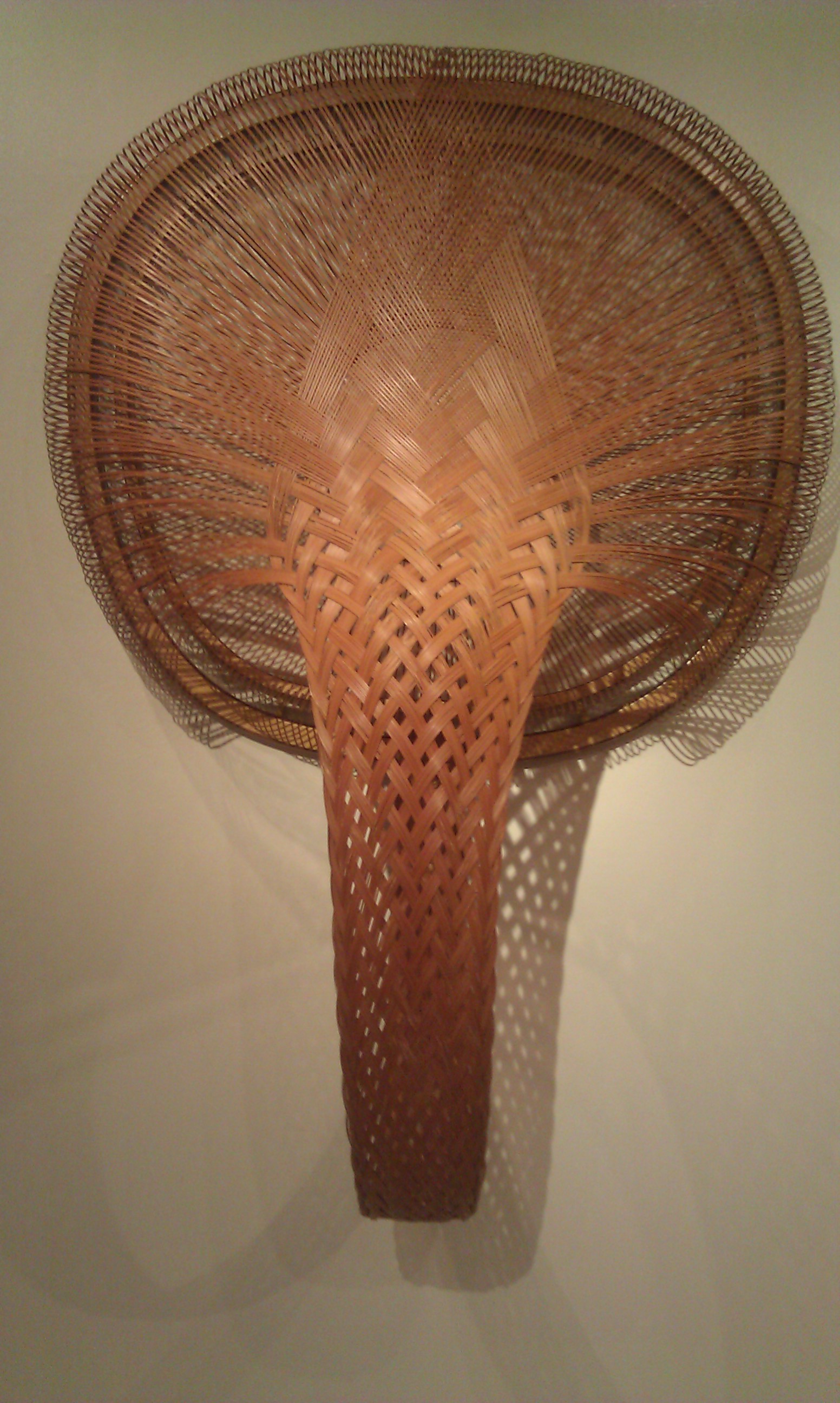By: Brigit Bauma
Strength, flexibility and light.
These are the powerful and lasting words that represent bamboo in the Japanese culture. Known as one of “The Three Friends of Winter,” bamboo’s symbolic meaning is from its ability to bend, not break, and endure the winter weather.
Due to its positive connotation, bamboo has been used for construction, cuisine, music, and literature. It is very often written about in poetry and stories. Also, its perseverance and malleability make it the perfect material for crafting and art.
Bamboo as a sculptural art form came from religious roots hundreds of years ago, using weaving techniques, along with other methods. Starting from the eighth century until modern times, weaved bamboo items have been created and used, making them an important part of Japanese culture.
“Bamboo basket-making techniques are one of the oldest forms of technical skills known to have developed in Japan,” Moroyama Masanori, senior researcher at the National Museum of Modern Art in Tokyo, said.
Well now, the Japanese culture and its love for bamboo art have come to Kean University in the form of “MODERN TWIST: Contemporary Japanese Bamboo Art.” The collection of art is presented at the Karl & Helen Burger Gallery located in the Center for Academic Success. In this exhibition, artists from all across Japan have contributed their sculptures to celebrate bamboo itself.
Kean University is well known for its rich diversity and interest in the world’s cultures. So there is no question as to why “MODERN TWIST” is being featured in one of its art galleries.
“When looking for shows to bring to the students and public at Kean University we always look for something different for the community to experience,” said Franki Vinici, graduate assistant to the University Galleries.
“Shows in the Karl and Helen Burger Gallery highlight cultural issues and often are interdisciplinary in nature,” Neil Tetkowski, Director of University Galleries, said. “It is a really great show and we’re lucky to have it here on campus.”
The weaved bamboo sculptures are known to be very beautiful, with their rich history and cultural influences. However, those are not the only things that make these pieces so special. It is not an easy task for the artists to create their works. Many of the artists featured in the gallery dedicate an entire year to just one bamboo sculpture.
“Although bamboo is a prolific natural resource, it is a challenging artistic medium. There are fewer than 100 professional bamboo artists in Japan today,” said Vinici. “Mastering the art form requires decades of meticulous practice while learning how to harvest, split, and plait the bamboo.”
Pieces that are featured in the exhibition are all different in many ways. Each artist has their own techniques that they use, including the use of resources like dye, fire, clay and lacquer. They even consider the different types of bamboo they will use, along with the way that each is weaved.
There are specific weaving techniques that each artist uses to create the effect they want. Some use bamboo weaving that allows for space, and light to shine through for interesting lights and shadows. Others want absolutely no crevices, This creates an entirely different effect. Many of the weaving decisions are made based on the purpose of that piece, which is usually for decoration or flower baskets.
As for inspiration, artists are inspired from a variety of sources. Some are influenced from their environment. They can draw inspiration from a specific place, like a town or village, or broadly, like from nature and its elements. Many pieces like “Sound of Wind,” “Wind Vessel” and “Pattern of Wind” by Uematsu Chikuyū, along with “Wind From a Long Distance” by Tanioka Shigeo, are all inspired by the wind. With their flowing patterns and wavy structures, it is not hard to see where their influence fits in.
Some are inspired by their culture. A few pieces are influenced by the Japanese history like the samurai and fashion of the time. Uematsu Chikuyū’s wall sculpture “Tie” was created to resemble a woman’s hairstyle that they would fashion into a knot. It uses intricate weaving techniques along with a round piece of plywood to create this simple-looking, but truly intricate and dramatic piece. Other cultural influences include folklore and music.
Last, but definitely not least, of the inspirations are by human ideas. It could be by books, a person himself, or just human feelings like hope, Zen and morality.
“The Clinging, Fire” is a piece by Nagakura Ken’ichi. The sculpture is a large plaque of interweaving bamboo, where one is not sure where it might begin or end. Within the piece, the bamboo is darker in some places and lighter in others. It is also scorched and fraying in many areas, while others seem untouched. Inspired by the classical Chinese “Book of Changes,” the piece implies a sense of morality with the contrasting darkness and lightness and the frayed and the intact.
“The show will be up till February 7th, Gallery Hours are Monday-Thursday 10:30 – 4:30 and Friday 10:30-4:00. Please feel free to stop by and visit the beautiful bamboo artwork,” said Vinici.
Kean University Galleries has a rich and diverse exhibition program. For more information on this show and all the Kean Galleries visit the Kean Galleries website at http://www.kean.edu/~gallery/.
“MODERN TWIST” was curated by Dr. Andreas Marks, Minneapolis Institute of Arts. Collection of the Clark Center and tour was organized by International Arts & Artists, Washington, D.C.
